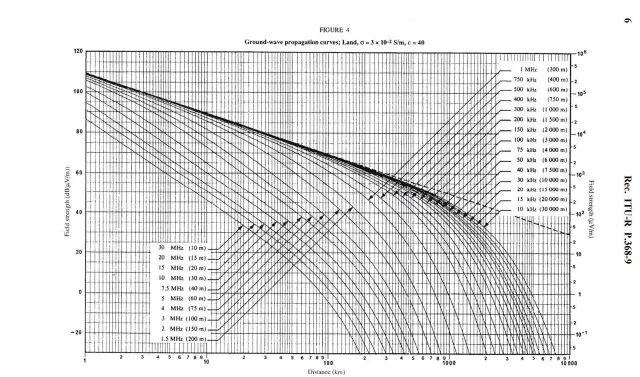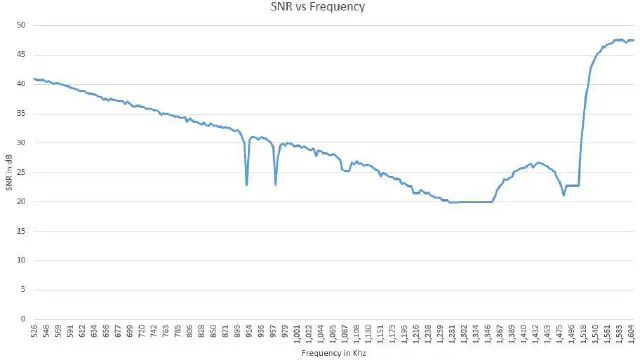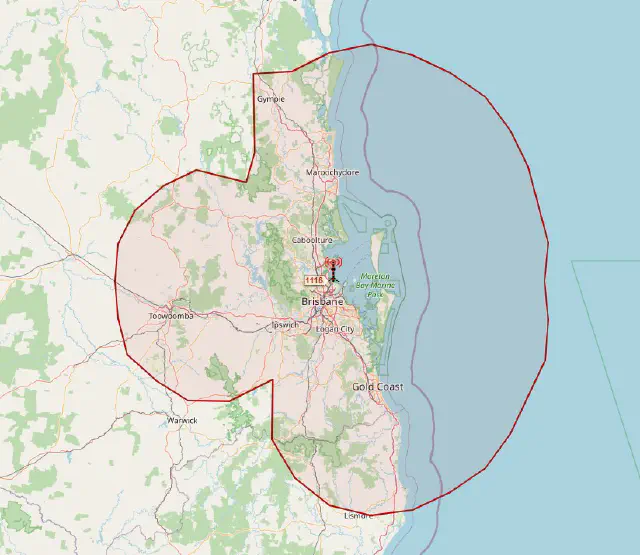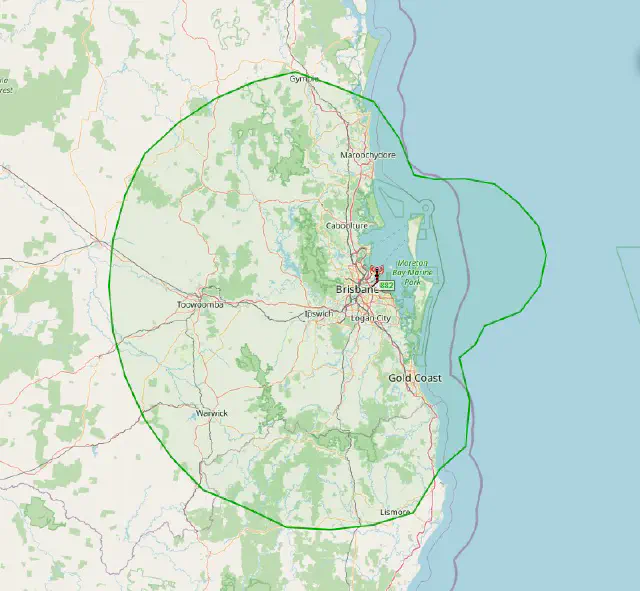FM switchoff in the UK; and a nerdy look at AM transmission characteristics
The UK’s government has published a look at the future of analogue radio. No FM switchoff until at least 2030, it says - that is, no mandated FM switchoff, though some broadcasters may come off FM earlier in favour of DAB. However, AM radio already “accounts for less than 3% of all listening”, and broadcasters are being gently recommended to ‘develop a plan to retire’ national AM services. No mandated date is really needed here; an ominous graph shows that literally nobody will be listening to AM radio in the UK by late 2028.
The government has also suggested a “must-carry” rule for smart speakers, so that they carry all licenced UK stations. The report zeroes in on actions from TuneIn, the defacto gatekeeper for radio on these devices - apparently they didn’t understand that Wales was in the UK! The report also recommends forcing these services to share consumption data with broadcasters. It certainly seems poor that a random VC-backed company in California has the capability to turn off UK radio for many listeners. I think much of it is quite sensible.
BBC reveals new logos in modern makeover - I wasn’t a particular fan of the new BBC blocks when I saw them for the first time last year, but they all look quite nice now they’re consistent across networks. There will be a new set of logos for the radio stations too, we’re told. Not sure I’m as much of a fan of the Google-esque “let’s arrange three blocks in random shapes” thing for the individual services like iPlayer and Sounds, though.
- Some people have claimed the new logos are a massive waste of money; not sure I buy that (and it’s the same physical size, so won’t be expensive to gradually change). This post claims it’s a font licensing saving: I’m not sure about that; but it is a final shift away from Eric Gill’s GillSans font, which doesn’t work well in digital environments, to the BBC’s own Reith family of fonts, which do. The first paragraph of Eric Gill’s Wikipedia entry does make me wonder quite why the BBC kept with Gill’s font-face for so long: after all, Sweden’s Rädda Barnen (Save The Children) charity stopped using Gill’s font in 2009. (The statues on Broadcasting House, also done by Gill, perhaps should stay, however.)
- Let’s nobody mention the BBC News front page, which still uses a random sans-serif font that they dropped from every other BBC News page in 2018; and the whole BBC News website which still uses GillSans in the header, not Reith Sans.
Congratulations to Boom Radio in the UK, which is getting some good press, and now a strong chairman appointment (albeit one who invested in the station for launch); and fun coverage on ITV’s This Morning.
Interesting to see Nine Radio promotion their Triton Digital Webcast Metrics in a recent release. Is this the new radio survey?
And talking of new radio surveys - RAJAR is out for the first time in quite a while later this week. The press advice is cautioning that we really shouldn’t be making any comparison to previous data since it’s been worked out a little differently. I suspect that’s a wish that everyone will ignore. Media info should have the latest data imported shortly after midnight, assuming that RAJAR haven’t changed the format and that I haven’t forgotten how the code works.
Why is 1116 worse than 882, and why did 4BC switch?
Well, I opened up a can of works with my piece last week about 4BC’s frequency switch - from 1116 AM to 882 AM.
First - it is not the first time this has happened in Australia (but is in Brisbane). Twenty years ago, 3AW switched frequency (from 1278 to 693), for much the same reasons. My apologies for the error.
After hearing a few interesting theories as to why the new frequency was better, I went to a private UK radio engineering group on Facebook to ask. And learnt a few things. Oh, my. Strap yourself in. Look at this graph for starters.

Lower AM frequencies go further, and are more efficient than higher ones. Above, from Rec. ITU-R P.368-9 is a fancy graph showing signal strengths: the transmitter is on the left, and the middle of the graph shows 100km (62 miles) away. The lower the frequency, the further it goes.
That’s why the European pirates were mostly on lower frequencies (hello, Laser 558), since they reached further for less power. It’s why the main ABC stations here are all lower down the AM dial: 720 in Sydney, 612 here, 774 in Melbourne, and so on - to cover more of the country. And it’s also why the historic commercial radio stations in the UK are above 1000kHz for that same reason: so they don’t go as far, to make it easier to share frequencies.
1116 is using 17KW, and 882 is using 5KW. While it’s irrelevant in this case (since the same company owns both), it’s also a significant cost saving in electricity bills; though I’m told that there is a plan to increase 882’s power as well.
One UK example given to me was 558 kHz’s coverage in London from 2.5KW of power versus 1548 kHz’s coverage in London from a rather larger 97KW. (Is that 38 times the power? Or is it logarithmic? Let’s not open that can of worms).
And there’s another thing:

Lower AM frequencies have less background noise - here’s a quick look at the Signal to Noise Ratio on the AM band (measured by one of the folk in the Facebook group a few years ago). A lower figure here is worse, and shows more interference the higher the frequency. ADSL (now being phased out in most countries) is one culprit, but there are plenty more.
But in 1116’s case, there was another thing again, shown here in a graph I think is from fm-scan․org…

The big notch in the transmission map to the south-west of the transmitter is to stop interference with the other user of this frequency in Melbourne (as can be seen by looking at a larger map) - so the transmitter is essentially blocked from broadcasting south-west. The only trouble with that is that the transmitter is situated to the, um, north-east of Brisbane. Follow the direction of that notch, and it takes you directly though the centre of Brisbane and its most populous areas, all of whom get a much worse signal.
Compare that with 882…

So, it has much the same transmission area (for a third of the power), except 882 doesn’t have that big notch to the south-west. 882 also appears not to be directed out to sea, which seems a bit of a waste.
And it’s very obvious when using an AM radio: the signal on 882 is significantly clearer, especially in the centre of the city. A competitor writes “they should have made this frequency change years ago”. I dare say that their music station, 4BH, probably was a little more important to them in those days.
If you’re interested, here’s the DAB coverage map for Brisbane, which shows (I suspect) why they’re not shouting as much about DAB+ here. Experience tells me that this map is very pessimistic, and this coverage is the ABC’s, not commercial radio’s (which I gather is a little different); but there’s a clear advantage for 882 in terms of coverage area.
So, now we know. Bet you’re glad you read th… is anyone still reading? Is this on? tap
Want to supercharge your radio show? Here’s a £1 week-long trial of Show Prep - from a world class radio consultant and the best show-prep writer in the UK. Great for UK stations, or for English-language stations everywhere, too. (ad)
Supporters
Thank you to Richard Hilton, and Brun Audio Consulting for your ongoing support of this newsletter. I’m very grateful to you.
If you’d like to support my work in any way, you can BuyMeACoffee - become a member to give regularly or just give a one-off coffee, or five. Here’s where to do that.
My professional website has more detail about who I am, and what I do, and whether I can help you further.
My newsletter is supported by:
Selected bits from Radioland are in RadioInfo in Australia, and RAIN News in the US
Lesen Sie außerdem ausgewählte Artikel auf Deutsch in Radioszene
Previously:
4BC switches frequency; and a landmark for UK commercial radio